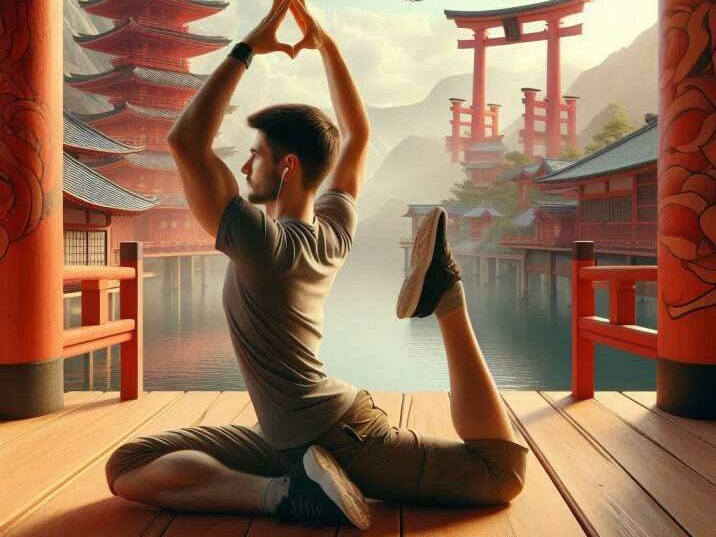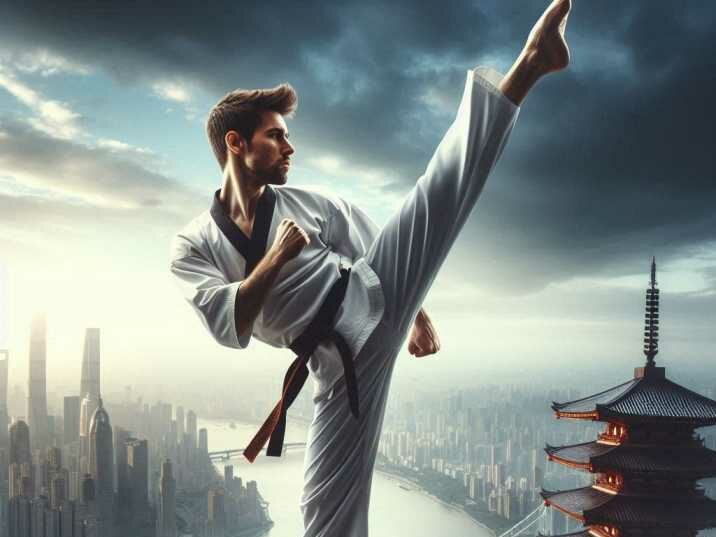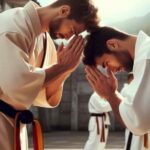Martial arts, with its diverse styles and techniques, demand a unique combination of strength, speed, and precision. One often overlooked aspect that significantly impacts performance is flexibility. But why is flexibility important in martial arts? This blog post will answer that question, providing valuable insights and practical tips for martial artists at all skill levels. We’ll explore how flexibility enhances performance, reduces injury risk, and why it should be an integral part of your training regimen.

Table of Contents
Table of Contents
- What is Flexibility?
- The Role of Flexibility in Martial Arts
- Benefits of Flexibility in Martial Arts
- Improved Technique
- Enhanced Speed and Agility
- Better Balance and Coordination
- Types of Flexibility
- Static Flexibility
- Dynamic Flexibility
- Ballistic Flexibility
- How Flexibility Reduces Injury Risk
- Flexibility and Recovery
- Integrating Flexibility Training into Martial Arts
- Best Flexibility Exercises for Martial Artists
- Stretching Routines
- Yoga for Martial Artists
- Pilates for Flexibility
- Flexibility in Different Martial Arts Styles
- Taekwondo
- Jiu-Jitsu
- Kung Fu
- Myths About Flexibility in Martial Arts
- Expert Tips for Increasing Flexibility
- Common Misconceptions about Flexibility in Martial Arts
- Conclusion
- FAQs
What is Flexibility?
Flexibility refers to the ability of your muscles and joints to move through their full range of motion. It is an essential component of physical fitness, impacting everything from daily activities to athletic performance. Flexibility involves both muscle elasticity and joint mobility, allowing for smooth and efficient movement.
The Role of Flexibility in Martial Arts
In martial arts, flexibility plays a crucial role in executing techniques effectively. Whether it’s delivering a high kick in Taekwondo or escaping a hold in Jiu-Jitsu, flexible muscles and joints enable fluid and powerful movements. Flexibility allows martial artists to perform techniques with greater ease and precision, enhancing overall performance.
Benefits of Flexibility in Martial Arts
Improved Technique
Flexibility enhances the quality of your techniques. It allows for a broader range of motion, enabling you to execute kicks, punches, and grapples more effectively. For instance, a high kick requires flexible hamstrings and hip flexors, while a deep stance necessitates supple hip joints.
Enhanced Speed and Agility
Flexible muscles react faster. When your muscles are supple, they can contract and relax more quickly, contributing to increased speed and agility. This is particularly beneficial in sparring and self-defense situations where quick reflexes are essential.
Better Balance and Coordination
Flexibility improves balance and coordination by ensuring that muscles and joints move harmoniously. This is vital in martial arts, where maintaining stability during dynamic movements is crucial. A flexible body can adapt more readily to changes in position, reducing the risk of falling or losing balance.
Types of Flexibility in Martial arts
Static Flexibility
Static flexibility involves holding a stretch for an extended period. It improves muscle length and joint mobility, making it easier to perform techniques that require a wide range of motion.
Dynamic Flexibility
Dynamic flexibility involves moving parts of your body through their range of motion with control. It is essential for martial arts as it replicates the movements performed during training and competition.
Ballistic Flexibility
Ballistic flexibility uses momentum to stretch muscles beyond their normal range of motion. While it can increase flexibility, it should be approached with caution due to the risk of injury.
Proprioceptive Neuromuscular Facilitation (PNF):
PNF techniques combine stretching and contracting muscles to improve flexibility. This method is often performed with a partner or using resistance bands.
Active Isolated Stretching (AIS):
AIS involves holding a stretch for a short duration and then releasing it, allowing the muscle to relax and elongate further. This technique helps improve flexibility without causing muscle fatigue.
How Flexibility Reduces Injury Risk
Flexibility training reduces the risk of injury by promoting muscle balance and joint stability. Tight muscles are more prone to strains and tears, while flexible muscles can absorb impact and adapt to sudden movements more effectively. Regular stretching also increases blood flow to the muscles, aiding in quicker recovery and reducing soreness.
Flexibility and Recovery
Incorporating flexibility exercises into your recovery routine helps to release muscle tension and improve circulation. This accelerates the healing process and prepares your body for the next training session. Techniques like foam rolling and gentle stretching can be particularly beneficial post-training.
Integrating Flexibility Training into Martial Arts
Flexibility training should be an integral part of your martial arts regimen. Incorporate stretching routines into your warm-up and cool-down phases. Additionally, consider dedicating specific sessions to flexibility training to achieve long-term improvements.
Best Flexibility Exercises for Martial Artists
Stretching Routines
Regular stretching routines can significantly enhance flexibility. Focus on major muscle groups used in martial arts, such as the hips, hamstrings, shoulders, and back. Hold each stretch for at least 30 seconds and repeat multiple times for best results.
Yoga for Martial Artists
Yoga is an excellent complement to martial arts training. It emphasizes flexibility, balance, and mental focus. Poses like the Warrior, Downward Dog, and Pigeon stretch key muscle groups and improve overall flexibility.
Pilates for Flexibility
Pilates focuses on core strength and flexibility. It involves controlled movements that enhance muscle elasticity and joint mobility. Exercises like the Swan and Spine Stretch target areas crucial for martial arts performance.
Hip and Leg Flexibility Exercises:
- Butterfly Stretch: Sit on the floor, bend your knees, and bring the soles of your feet together. Gently press your knees toward the floor to stretch the inner thighs.
- Front Split Stretch: Stand with one leg forward and the other leg extended backward. Slowly lower your body into a split position, keeping your hips square and your back straight.
Shoulder and Arm Flexibility Exercises:
- Shoulder Rolls: Stand with your feet shoulder-width apart. Roll your shoulders forward and backward in a circular motion to loosen up the shoulder joints.
- Triceps Stretch: Extend one arm overhead and bend it at the elbow, reaching your hand toward the opposite shoulder blade. Use your other hand to gently push the elbow further for a deeper stretch.
Spine and Core Flexibility Exercises:
- Cat-Cow Stretch: Start on all fours, arch your back upward like a cat, and then lower it down while lifting your head and tailbone. Repeat this flowing motion to stretch and mobilize the spine.
- Seated Twist: Sit on the floor with your legs extended. Bend one knee and place the foot on the outside of the opposite knee. Twist your torso toward the bent knee, using your opposite arm to deepen the stretch.
Flexibility in Different Martial Arts Styles
Taekwondo
Flexibility is paramount in Taekwondo, known for its high kicks and dynamic movements. Stretching routines focusing on the legs and hips are essential for executing techniques effectively.

Jiu-Jitsu
In Jiu-Jitsu, flexibility aids in maneuvering and escaping holds. Flexible joints and muscles allow for greater mobility on the ground, giving practitioners an advantage in grappling.
Kung Fu
Kung Fu incorporates a variety of stances and movements that require flexibility. Stretching exercises targeting the entire body help practitioners achieve the fluidity and precision characteristic of the style.
Myths About Flexibility in Martial Arts
There are several myths about flexibility in martial arts. One common misconception is that flexibility training is only for beginners. In reality, even advanced practitioners need to maintain and improve their flexibility. Another myth is that flexibility alone can prevent injuries. While it helps, a comprehensive training program including strength and conditioning is also essential.
Expert Tips for Increasing Flexibility in Martial Arts
To increase flexibility, consistency is key. Incorporate regular stretching into your routine and be patient with your progress. Use a variety of stretching techniques, including static, dynamic, and PNF (proprioceptive neuromuscular facilitation). Ensure proper warm-up before stretching to avoid injuries.
Common Misconceptions about Flexibility in Martial Arts
There are several misconceptions surrounding flexibility in martial arts. Let’s debunk some of these myths:
Flexibility is only important for high kicks
While flexibility is crucial for high kicks, it also plays a significant role in other techniques, such as punches, blocks, and ground fighting movements.
Flexibility training takes too much time
Incorporating flexibility exercises into your martial arts routine doesn’t have to be time-consuming. Even a few minutes of stretching before and after training can yield significant benefits.
Flexibility is only for advanced practitioners
Flexibility training is beneficial for martial artists of all levels, from beginners to advanced practitioners. It helps improve technique, prevent injuries, and enhance overall performance.
Conclusion
Flexibility is vital to martial arts, enhancing performance, reducing injury risk, and contributing to overall well-being. By integrating flexibility in martial arts training into your regimen, you can improve your techniques, increase your speed and agility, and maintain better balance and coordination. Remember, consistency and proper technique are key to achieving lasting flexibility gains. Start incorporating these tips and exercises today to elevate your martial arts practice to the next level.
FAQs
1. How often should I stretch to improve flexibility?
Stretching daily or at least three times a week is recommended for noticeable improvements in flexibility.
2. Can I improve flexibility at any age?
Yes, flexibility can be improved at any age with consistent practice and proper techniques.
3. Is yoga or Pilates better for flexibility in martial arts?
Both yoga and Pilates are beneficial. Yoga emphasizes overall flexibility and mental focus, while Pilates targets core strength and muscle elasticity.
4. How long does it take to see results from flexibility training?
Results vary, but with consistent practice, you may notice improvements in flexibility within a few weeks.
5. Should I stretch before or after martial arts training?
Both! Stretching before training helps warm up muscles, while stretching after aids in recovery and reduces muscle soreness.
6. How long does it take to see noticeable improvements in flexibility?
The time it takes to see improvements in flexibility varies from person to person. Consistent practice and dedication are key. With regular training, you can expect to see progress within a few weeks to a few months.


